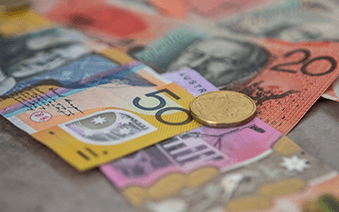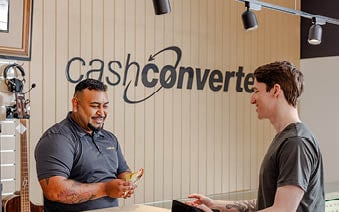Being a ‘Conscious Consumer’ and living green have become buzzwords. But what does ‘be green’ mean when you're out shopping? Some people actively choose to be green so they’re aware of their buying habits, while others practice green habits without even knowing.
You may also be unconsciously green from how the planet has culturally shifted over time – especially if you’re a Millennial or a previous generation. Maybe you take less time to shower because you’ve grown up around campaigns about water waste, or perhaps you throw rubbish out correctly because of the education on littering and recycling. .
We’ve come so far with how we move through this world that some things we do might naturally be green. What’s important is whether we’re environmentally aware and conscious about our actions.
Do you use a reusable coffee cup every time you grab a coffee because you love the look of said cup, or did you get one to protect the environment? Do you use metal straws because you hate the feel of plastic ones, or did you do that to go plastic-free?
If you’re somebody who’s already involved with green consumption but doubting whether you’re making a difference, then here are a few ways to break it down and see the signs that scream, "Hey, I'm a green consumer!".
First up, check your shopping gear. If your reusable bag is practically your sidekick, you're on the right track. Green people steer clear of single-use plastics and bring their trusty bags everywhere. If you want to go that extra step, finding bags that come from eco-friendly or green brands will set you apart from the rest.
When you hit the grocery store, your eyes dart straight to locally grown or organic produce. Better yet, you’ll take any chance you get to visit a weekend farmers market. Greenies love supporting local farmers, reducing their carbon footprint, and having fresh, seasonal goodies on their plates.
Ever find yourself trying to find ways to fix things that others might just toss away? Breathing new life into items instead of giving into the throwaway culture makes you a green consumer. This can come in many forms like upcycling a mid-century item for reselling or using the material from an old bedframe to turn into another item.
If your place looks like a landmine of flea market finds, congratulations – you're basically green. Opting for second-hand items is a great way to reduce waste and support sustainable practices.
At times, second-hand still gets a bad rep with people thinking that the item might be worn down, old, or bad quality – but this cannot be further from the truth. Many tend to throw away everyday items like electronics, outdoor tools, kitchen appliances, and more while they’re still in tip-top condition.
Contrary to what you might think, there are different reasons why someone might resell – from wanting to change styles, upgrade to the latest tech, or thrift mid-century furniture.
Greenies don't mess around with disposable coffee cups. If your reusable coffee cup is a permanent item in your daily routine, you're making a positive impact by slashing single-use waste. Being able to reuse an item time and time again makes it a green product.
Whether it’s switching off room lights, or shopping for energy-efficient appliances, you’re green if you prioritise saving energy. You’re essentially reducing your environmental footprint and proving that being green extends beyond the shopping cart..
Green consumers don't just scrape away leftover food; they're composting wizards. If you've got a compost bin around your house, you're steering kitchen waste away from landfills and into your garden soil. Composting is like recycling in that you’re breaking down organic matter rather than paper or glass – allowing materials to be reused and repurposed.
Instead of driving, eco-friendly modes of transportation like taking the train or bus will make you greener than someone who's on the road. But, if you find yourself walking or cycling, then you get the super green gold star as you’re reducing your carbon footprint in the best way possible.
Taking your green values to the online sphere is one way to tell that you’re pushing for continuous green living. If your social media showcases sustainable living tips, eco products in Australia, and environmental advocacy, you're using your digital space for positive change.
Finally, if you find yourself sharing your green habits with friends, family, and colleagues – encouraging their sustainable choices, and convincing them to go a greener lifestyle – you're not just a green consumer, you're a green influencer.
Some green practices are easier to adopt because they’re more on-trend and accessible. Think about it – it’s hard to drive an electric car if they’re at a higher price point than a petrol car. But reusable cups, on the other hand, are much cheaper, and there are now plenty of cool designs to suit your style.
This is why some old habits die hard.
Being a green consumer isn't about perfection; it's about making conscious choices that align with sustainable living. If you find yourself nodding along then you’re already greener than you think, and a healthier planet will have you to thank for that!

Answering your questions about loans and staying savvy

Get more bang for your buck with these handy tips.

Need some advice that’s not about cash? We can help.
Your cart is empty.